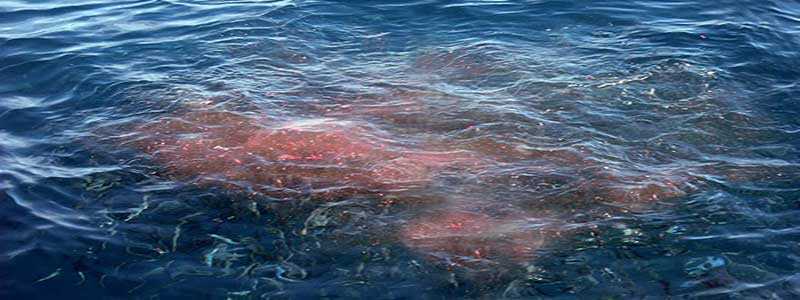Successful chumming not only provides an attractant and appetizer for fish, it puts them in a feeding mood. Areas, where fish are concentrated such as wrecks, reefs, structures, or any other bottom configuration, provide the best places to chum as long as you have the tide or a current to carry the tidbits and the scent. Positioning the boat or yourself (if you are chumming from shore) is critical so the chum will trace a path to the target area.
Chum takes many forms. The most common is a block of ground-up oily fish either fresh or frozen placed in a net bag and hung in the water. It could also be small fish either dead or alive. Veteran chummers often use chum blocks as the basic attractant and then sweeten the offering with chunks of larger fish or even whole fish.
The key to effective chumming is the creation of a continuous slick with no break in it. With block chum, the water takes care of this, but an occasional shake of the mesh bag doesn’t hurt. If you are ladling chum or tossing chunks or small baitfish in the water, you need to throw in the next batch as the prior one begins to fade out of sight, and that means you have to keep chumming even while fighting a fish. Any break in the slick for a minute or two and your target species will usually abandon it and return to where they were holding.
Nothing is more important when fishing a dead bait in a slick than to keep it swimming constantly. As chum is ladled over the side or drifts away from a mesh bag, it follows an inclined plane toward the bottom. The angle of the plane depends on the force of the current. Free floating a bait is easy if you become a line watcher. Start by putting the bait in the water and stripping off three or four-rod lengths of line. Watch the line closely. As the last coil starts to straighten, strip off more line and keep following this procedure.
By watching the line, you can also tell when you have a pickup. The line will move off much faster than the tide is carrying it, and that’s your clue. Engage the reel, wait for an instant or two, and then start reeling. The rod should double over and the battle begins. If you are fishing live bait in the slick, cast it as far away as possible. As the baitfish swims back toward the cover of the boat, a predator will usually nail it.
If the water is clear, you might want to wait until you see larger fish in the slick and then drift your bait back to them. This is also an excellent time to present an artificial lure, although you can fish artificials in a slick even when you can’t see the fish. For the fly fisherman, the best results occur when you drift the fly in the slick without imparting any action to it. I discovered this by accident after a frustrating experience some 50 years ago, and it still works for me today.
And, if you find sailfish or any other species balling bait, cast the fly in the midst of the bait and let it sink without stripping. You can bet a fish will eat the fly.
No matter where you fish or the species you seek, chum can make the difference between an average catch and an outstanding one.
